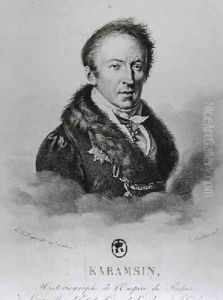Constant Louis Antoine Lorichon Paintings
Constant Louis Antoine Lorichon was a French painter born in 1817, during a period that witnessed the flourishing of Romanticism in European art. His life spanned much of the 19th century, a time characterized by significant political, social, and technological changes that influenced the art world profoundly. Lorichon's death in 1892 marked the end of a career that was deeply embedded in the stylistic transitions of the era, from the emotive and dramatic themes of Romanticism to the evolving impressions of realism and the early murmurs of Impressionism.
Lorichon's artistic journey began in the traditional academies, where he was trained in the classical principles of drawing, composition, and the handling of color. These early years were crucial in developing his technical skills and artistic sensibilities. However, like many artists of his time, Lorichon found himself increasingly drawn to the natural world and the everyday life of people, themes that would later dominate his oeuvre. This shift mirrored the broader movement in the art world towards realism, a style that sought to depict subjects as they were, without idealization.
Throughout his career, Lorichon exhibited his works in various salons and galleries, gaining recognition for his landscapes and genre scenes. His paintings often captured the serene beauty of the French countryside, imbued with a sense of tranquility and timeless elegance. Lorichon's work was characterized by a delicate interplay of light and shadow, a testament to his study of the natural world and his ability to evoke emotion through the depiction of simple scenes.
As the 19th century progressed, the advent of photography and the rise of Impressionism began to challenge traditional notions of art and representation. While not an Impressionist himself, Lorichon's later works show an awareness of these changing dynamics, with a looser brushwork and a brighter palette that hinted at the evolving tastes of the period. Despite these stylistic shifts, he remained committed to the themes of nature and everyday life, demonstrating his adaptability and enduring relevance in the rapidly changing art landscape of his time.
Constant Louis Antoine Lorichon's legacy is that of a skilled painter who navigated the complexities of 19th-century art with a keen sense of observation and a dedication to his craft. His works, though perhaps not as widely recognized as those of his contemporaries, offer a window into the transitional period of French art, reflecting the shifts in society and the ongoing dialogue between tradition and innovation. Lorichon's death in 1892 brought to a close a career that, while rooted in the past, looked forward to the modern expressions of the 20th century.
